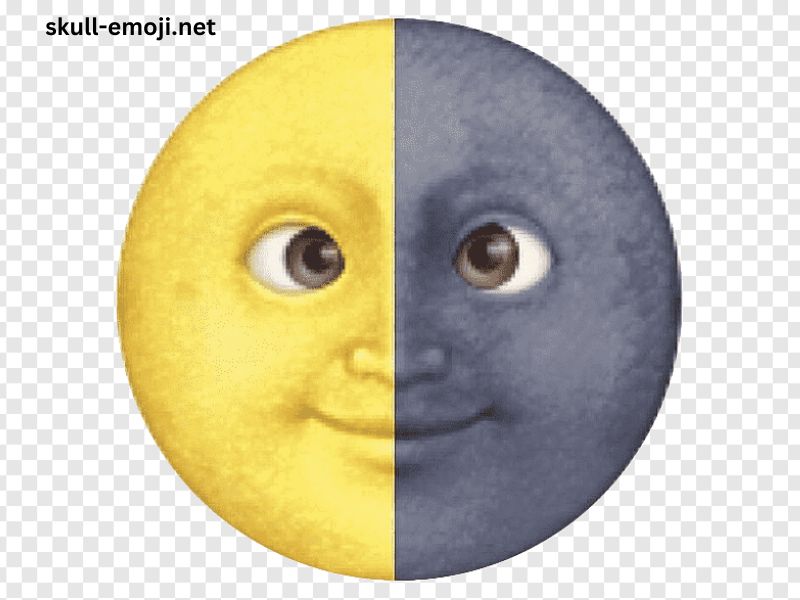The Moon has captivated humanity for millennia. Its phases have influenced art, culture, mythology, and even agriculture. With the rise of technology, our connection to the Moon has evolved, especially through the use of digital symbols like the Moon phase emoji. In this article, we’ll explore the significance of the Moon phases, how they affect our lives, and the relevance of the Moon phase emoji in today’s digital landscape.
The Moon Phases Explained
The Moon goes through a cycle of phases approximately every 29.5 days, resulting from its position relative to the Earth and the Sun. There are eight primary phases of the Moon:
- New Moon: This is when the Moon is between the Earth and the Sun, making it invisible from Earth. It signifies new beginnings and is often associated with setting intentions.
- Waxing Crescent: After the New Moon, a small sliver of the Moon becomes visible. This phase symbolizes growth and the building of energy.
- First Quarter: At this phase, half of the Moon is illuminated. It represents decision-making and overcoming challenges.
- Waxing Gibbous: More than half of the Moon is visible. This phase is about refinement and honing in on goals.
- Full Moon: The entire Moon is illuminated. This phase is often associated with culmination, clarity, and heightened emotions.
- Waning Gibbous: After the Full Moon, the light begins to decrease. This phase is a time for gratitude and reflection.
- Last Quarter: Again, half of the Moon is visible but decreasing. This phase signifies letting go and making adjustments.
- Waning Crescent: Only a small crescent of the Moon is visible. It symbolizes rest and preparation for the next cycle.
The Moon’s Influence on Earth
The Moon’s gravitational pull significantly affects Earth, most notably through tides. The cycles of the Moon are also linked to various natural rhythms, influencing not just the oceans but also plants, animals, and even human behavior. Many cultures have long believed in the Moon’s power over emotional states and human activities.
Agriculture and the Moon
Farmers have relied on lunar cycles for centuries. Certain phases are believed to be more favorable for planting, harvesting, and other agricultural activities. For example, the waxing phases are often seen as ideal for planting, while the waning phases are considered better for harvesting. This connection highlights the Moon’s role in our lives beyond the night sky.
The Moon Phase Emoji: 🌕
In the digital age, the Moon phase emoji serves as a modern symbol of this celestial body. Introduced in the Unicode Standard, the Moon phase emoji can take various forms, such as 🌑 (New Moon), 🌒 (Waxing Crescent), 🌓 (First Quarter), 🌔 (Waxing Gibbous), 🌕 (Full Moon), 🌖 (Waning Gibbous), 🌗 (Last Quarter), and 🌘 (Waning Crescent).
Communication and Expression
The Moon phase emoji can be used to convey moods, feelings, or thoughts associated with different phases. For instance, a person may use the 🌕 emoji to express feelings of fullness or happiness, while the 🌑 emoji could represent new beginnings or feelings of emptiness. This adds a layer of nuance to digital communication, allowing users to share complex emotions and ideas succinctly.
Popularity in Social Media
The Moon phase emoji has gained popularity on platforms like Instagram, Twitter, and Facebook. Users often incorporate it into their posts to symbolize personal growth, reflect on emotional states, or simply share their love for astronomy. Hashtags like #FullMoon and #NewMoon often accompany these posts, fostering a sense of community among those who share an interest in lunar cycles.
Cultural Significance of the Moon
The Moon holds immense cultural significance across various societies. Many myths, legends, and practices are centered around its phases. Here are a few examples:
- In Ancient Cultures: The Moon was often worshipped as a deity or a guiding force. Ancient Egyptians revered the Moon god Khonsu, while the Greeks associated the Moon with Artemis, the goddess of the hunt.
- In Folklore: Many cultures have myths explaining the Moon’s phases. For instance, some Native American tribes believed that the Moon was a guardian of secrets, reflecting different aspects of life through its phases.
- In Astrology: The Moon is considered a significant astrological influence, representing emotions, intuition, and subconsciousness. Each lunar phase is thought to have specific energies that can impact individuals based on their astrological signs.
Modern Interpretations and Practices
Today, many people continue to observe and celebrate the Moon’s cycles. Lunar calendars are popular for tracking phases, and practices like moon rituals have gained traction. These rituals often involve setting intentions during the New Moon or releasing negative energy during the Full Moon.
Mindfulness and Reflection
The Moon phases encourage mindfulness and reflection. Many individuals use the lunar cycle as a framework for personal growth, aligning their goals with the energies of each phase. This practice can create a sense of harmony and connection to nature.
Conclusion
The Moon, with its phases, has always been a source of wonder and inspiration. From ancient agricultural practices to modern digital expressions like the Moon phase emoji, its influence is pervasive and enduring. As we continue to navigate the complexities of life, the Moon reminds us of the cycles of change, growth, and renewal.
Whether you are an avid astronomer, a spiritual seeker, or simply someone who enjoys the beauty of the night sky, understanding the Moon’s phases can enrich your experience of the world. And with the Moon phase emoji 🌕, you can share that connection with others in a way that transcends time and space, bringing the timeless allure of the Moon into our digital lives.
Embrace the Moon’s magic, and let it guide you through your own cycles of growth and reflection.



